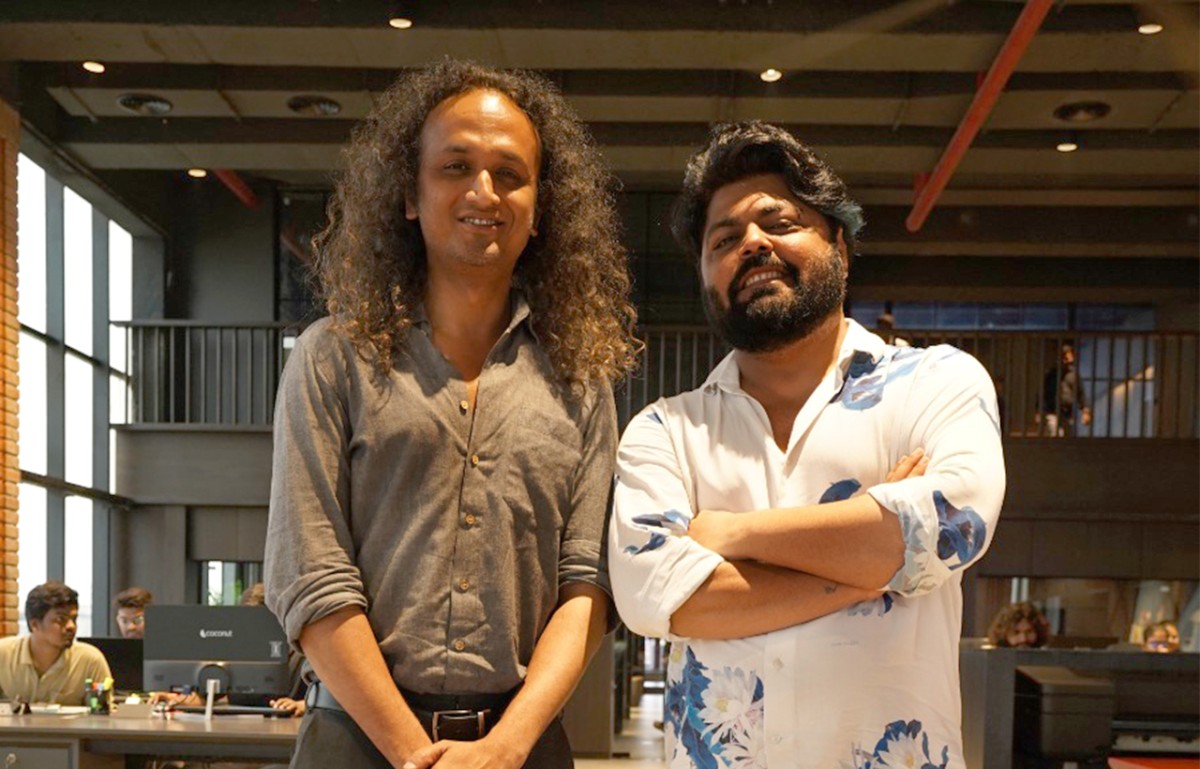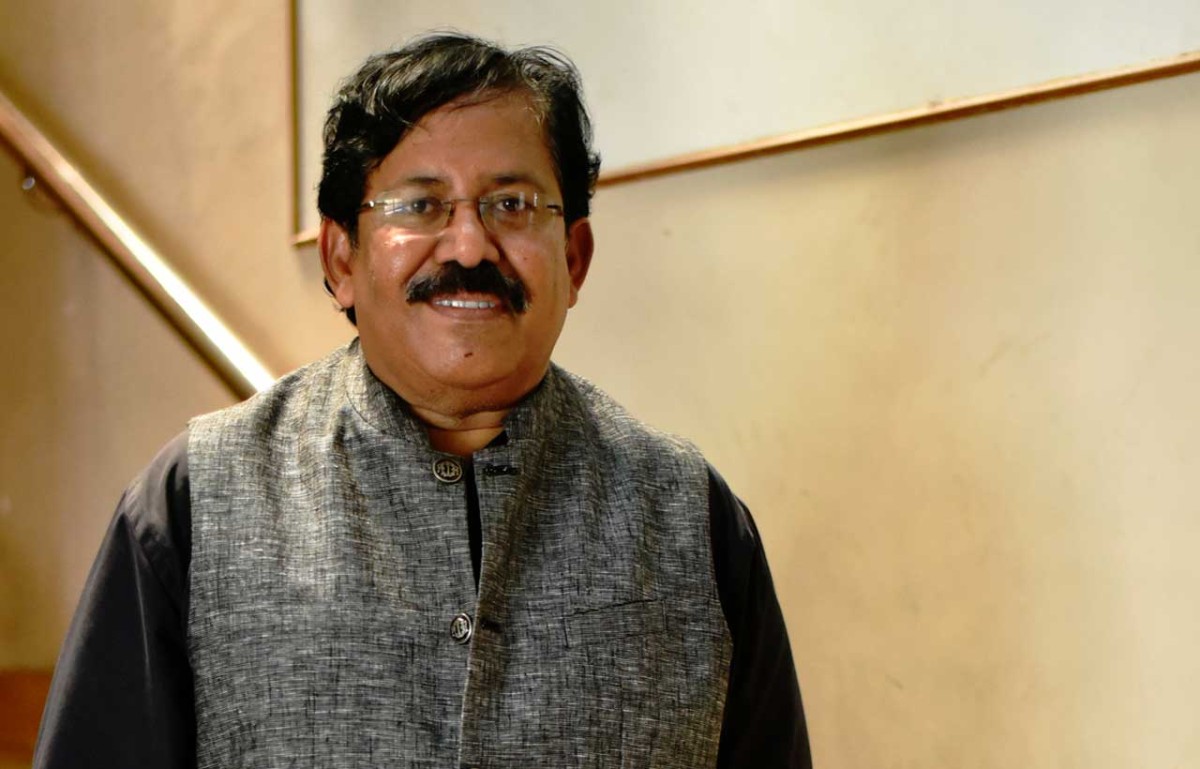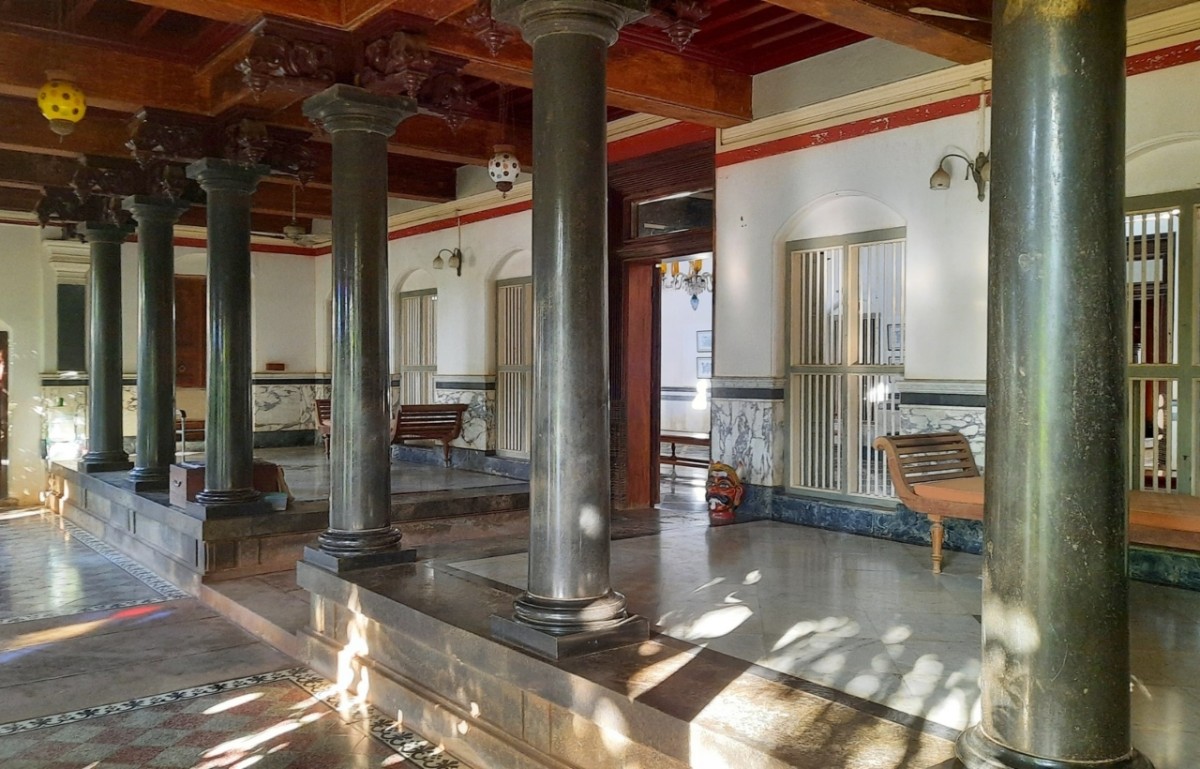We Don’t Intersect, We Run Parallel: Vadodara Architects Shourya & Dexter On Their Creative Synergy
- November 27, 2025
- By: Sanyukta Baijal
- INFLUENCERS
In an exclusive conversation with Building Material Reporter, Vadodara’s dynamic design duo Ar. Shourya and Ar. Dexter, unveil their architectural journey. The passion for their craft, their ambitious nature and positive approach towards challenges sets the two apart. The minds behind their firm, Uneven, get candid in this conversation, opening up about their rapport, their partnership, their design philosophy, and so much more.
How did the journey of Uneven begin?
Shourya- We started Uneven just like that, with no future plan, nothing. We just started. We were like good friends, we used to sit together, we started doing small-small things together and then it kept on going.
But tell me, how would this college friendship turn into, you know, business and then creating, I mean, two decades of creativity, how did you reach here?
Dexter- Long story short, I think, somewhere in the process from doing group works together in college, we understood probably that, yeah, we do share some kind of camaraderie between the two of us. And I think work-wise, it's been a good path that we took. We don't intersect in the wrong way, we kind of draw lines pretty parallel. I think that's the main crux of how this works for us.
Shourya mentioned that at Uneven, architecture and design are approached through “massing and detailing.” What does this mean for the studio, and why this framework?
Shourya- So, because basically, you know, you call them architecture and interior, I don't know, it is always like massing and detailing.
In our office, we always discuss, like, when you're doing a bigger scale, that is massing, when you're doing smaller things into, you know, minute detailing, that is detailing. So, rather than calling it architecture and interiors, like, we design everything, like, we do public group housing, niche apartments, everything. So, in that case, how do you define architecture and interiors? It's always massing and detailing.
Dexter- And somewhere, we even go a step further sometimes, like, we even design stationery for our clients, because we've done the entire place, architecturally, then the interiors, and then we don't want them to have weird stationery, you know, so that's again something that we do venture in. So, it's basically design for us.
Many college friendships turn into startups, but not all partnerships actually work out. How did you two manage to build a partnership that truly gels?
Dexter- I think that's where the friendship part also played a very important role for understanding each other personally, our temperaments, what one is good at, what one is not. So, our expectations from each other also are very sorted and balanced. We know that, I know that for a lot of things, Shourya is going to take care of this, and I don't really need to look back into that. I have the freedom then to do what I can do, which he thinks I can do really. So, there you go.
Shourya- And basically, in Hindi, there is a word called Poorak. So, we are like poorak of each other, like what I do, he doesn't get into, what he does, I don't get into. So, we are poorak of each other, that's why I think it's working nice.
So, we are Karan and Arjun in the end, that is what we would say.
How do you get inspired with spaces?
Shourya- So, it's every time, like there are many aspects of that. I would want to highlight one thing, like design changes as per time, like what I used to design 10 years back, 15 years back. Right now, plans are different because requirements have gone different.
Lifestyle has gone into a different direction. People's expectation from a house has a different definition now. So, every time when I start designing, like if I design right now, it is not going to be same after 5 years because all these parameters will keep on changing and our design, our thinking is always based on this. Like what is the current need? What is the end user's need? So, because it's always new.
Dexter- And that need is actually their mindset. I mean, at that kind of scenario, at that point of time, now how people are looking at things is different from what they did a couple of years ago. So, that's what actually brings about change in architecture.
Everything today has a trend cycle, and most don’t last long. According to both of you, which trend has overstayed in the design world?
Dexter- Minimalism that people talk about. Overstayed, yes. I think it will stay still. But it's just that a lot of designers only use it as a definition. But somewhere it's always going to be a fusion and that's the definition that I talk about always. I mean, a fusion is something that works for everybody, that somewhere blindly people are also following it. And that's something that I enjoy doing at least.
Shourya, you’re from Vadodara and Dexter comes from Goa. vadodara is this interesting blend of old and new culture, tradition, strong education, and a touch of modernism. How would you define Vadodara, and in what ways does the city inspire the work you create today?
Shourya- So, born and brought up in here in Baroda and it is like a very quiet, very small and laid-back city, I would say. And that's what I like about Baroda. Like, we don't have to think about anywhere, wherever you want to go, you can just reach in 15 minutes. You don't have to make big preparations to reach to any corner of Baroda. So, that's the best part of Baroda.
That's what I like about Vadodara. People from other big cities always see this one as a small town and that's fine. But people here has a, I mean, taste-wise, they're very well-learned people living here and they have like very particular style, I would say. Again, everything, houses, if you see, talk about house, if you talk about office, they have their own thoughts. I want to have this and I want to have this. So, everywhere, definitely, it is going to be everywhere. But again, in Baroda, they have more detailing. So, they make us do all the work.
Dexter, coming from Goa and now being settled in Vadodara. What was it that convinced you to make this city your base?
Dexter- Well, I came from Rajkot, actually. I'm Goan originally. But yeah, Baroda, again, as Shourya said, it's a very peaceful place, it's very laid-back. I understood that this city is very humble. I mean, there's not much of expectations from you personally. I mean, you're accepted with a very warm heart wherever you go and however you're performing as a designer, I mean. So, this city has a lot of scope for anybody and everybody, I would say. I mean, because we have a lot of industries happening around. We've got a very amazing educational background happening here. So, the entire setup over here is so cosmopolitan, so vivid that there's a flair for everybody that happens over here.
So, that's something that really drew me here. And of course, probably the best time of my life, college, as we all describe it, I did that here. So, again, that bonding with the place and the people here is what actually brought me back.
How did you draw your attention to designing and detailing?
Dexter- Again, keeping your eyes wide open. I mean, there's a lot that we've drawn from nature. There are a lot of proportions that we see around. There's a lot of colour palettes that we see around that we play with. Somewhere trying to retain as much as we can to be natural because those are proportions probably that are unmatched and that's what we kind of understand actually work or function correctly. Also, inspiration comes in a lot from what flaws we probably have seen ourselves doing also in the past. So, again, correcting yourself probably is one of the biggest inspirations that we've had and we've climbed steps, I think.
Freshers train for just a couple of months before deciding to leave and start their own firms. It’s becoming a noticeable trend. How do you think this impacts the profession and the fraternity at large?
Shourya- So, basically how I see this trend is like you can mimic Dev Anand, you can mimic Anil Kapoor but you cannot become Anil Kapoor. You can walk like him like two months, three months. They could walk like me or talk like me but the kind of 20 years experience what we have.
Why Uneven? What does the name signify for both of you?
Shourya- We worked in Mumbai then we came back to Baroda and we hired one small house which has two rooms. I always describe everything because that one room was Dexter's room. He was living there. I was staying there. He was staying there and the other room where we had two computers, mine and his. That's how we started working together. We started doing small, small things and till then the name was not there.
Then we used to discuss that yes, the work has started. We need to register it. Then we seriously started thinking. Then we had two, three things in our mind and that's how the word 'Uneven' came to our mind.
Dexter- Honestly, it popped up. We were reading some passage somewhere and we were looking for a noun in it and this wasn't a part of the sentence, you know, that way and somewhere then it clicked and he came up with this. Why not uneven? I don't have an answer. Why not? I mean, it actually fits and very smoothly.
Shourya- And then later on, we started digging it out. So, basically, personality-wise, both of us are very different. Yeah, we are very good friends. Yeah, but again, we're very different. So, that's why.
Group housing brings a unique challenge, you don’t know the eventual user, unlike in villas. Preferences differ widely, someone may want a compact bedroom but a large kitchen. How do you approach design when the end user’s personality and needs aren’t defined?
Shourya- Again, we have to become that person. If we are doing a niche apartment of like three crores or four crores, then we have to understand who is going to be, like, we need to imagine everything, like, there's going to be a group age of, group of 45 to 50. All that I have to understand and I have to design accordingly. So, it's not complicated, but again, I have to become that person and I have to think and that according to that, I designed the spaces. Basically, now, nowadays, we try and keep everything open. We try and keep everything very, you know, convertible. You can merge two rooms together, you can make one room little bigger. So, all those flexibilities are needed now. So, we keep that in mind.
Pinterest is a standard in today's date and a lot of clients come with their ideas and pictures for designs. How do you deal with that?
Shourya- So, before he starts, we have decided to have a notice on our, in our conference where if you come up with a Pinterest ideas, we're going to charge you double.
Dexter- I think sometimes clients have this feeling that it is, their life is very sorted because of it. I mean, but somewhere I feel they're complicating their own lives with it because there's so much available on that platform that it's difficult for them to focus. Earlier, the story that we could take them through, but this is the language that we want to design for you. This is what you are and this is what you'd be happy with. But 10 pictures that I like a blue sofa, I like a white sofa also, which is very contrasting. That's the kind of referencing that people do themselves and come now. So, again, that has increased my meeting time with people, that has increased discussion time with the family, trying to understand, trying to derive from them what they are, what they'll actually, actually enjoy using. And that's how I design the latter for them accordingly because it's not become easier, it's become tougher now. And thanks to Pinterest.
Shourya- Because you don't have, because as a layman, they don't have a sense of space. Like you see a picture which is like 40 feet by 40 feet living room and you come up and you try and tell me, I want this thing. It's not going to look the same. You cannot combine those two things.








